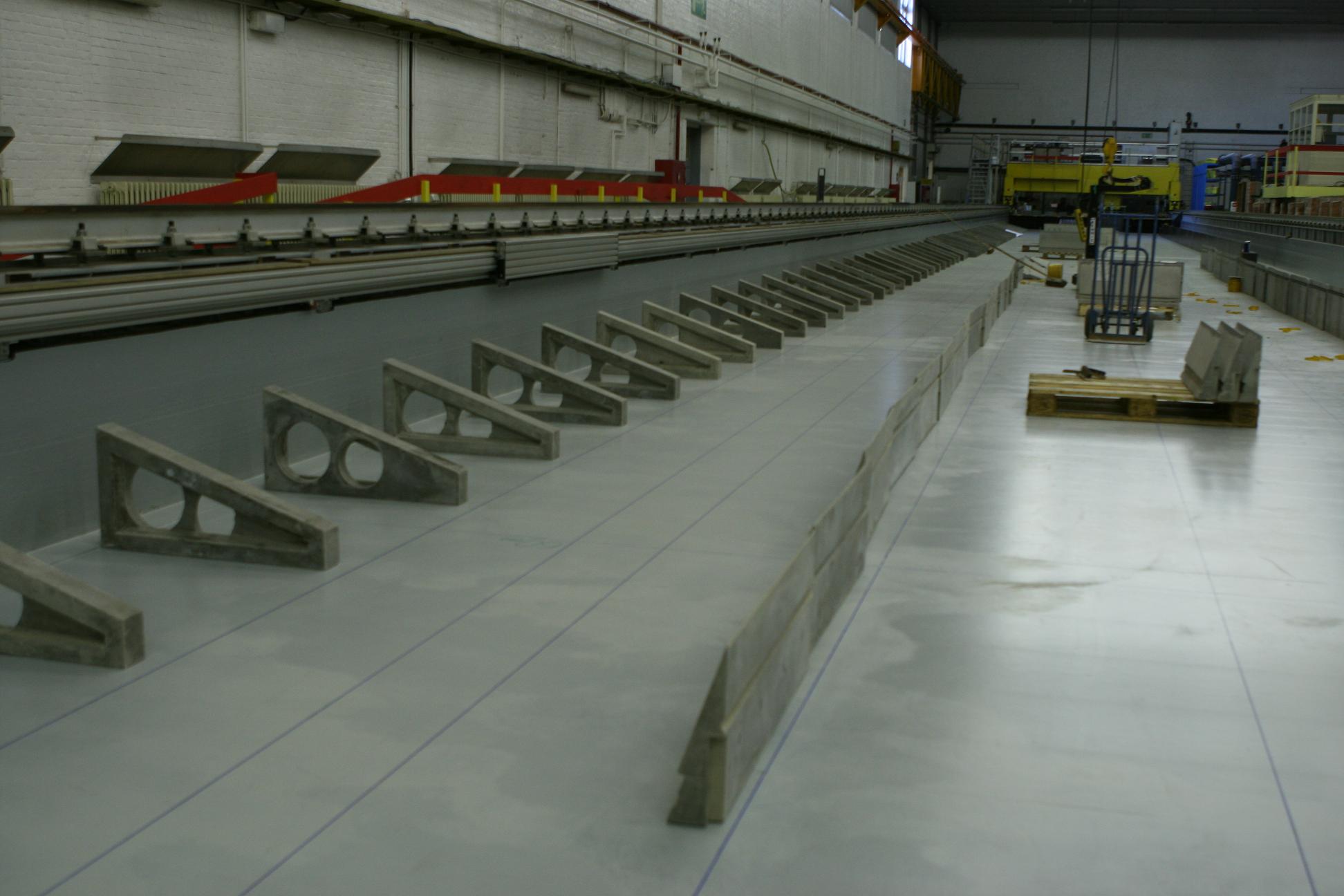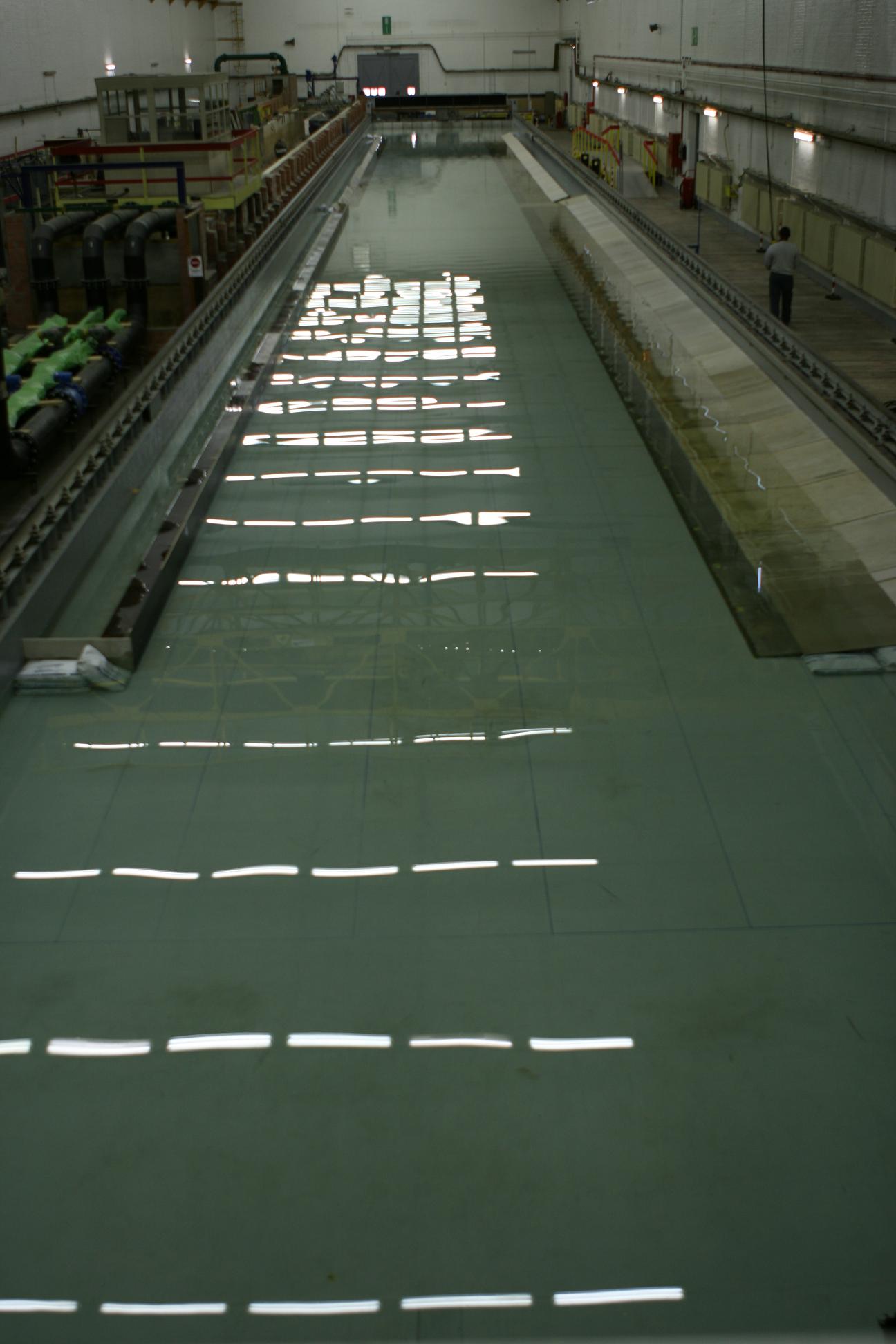Bank Effects
Experimental campaigns
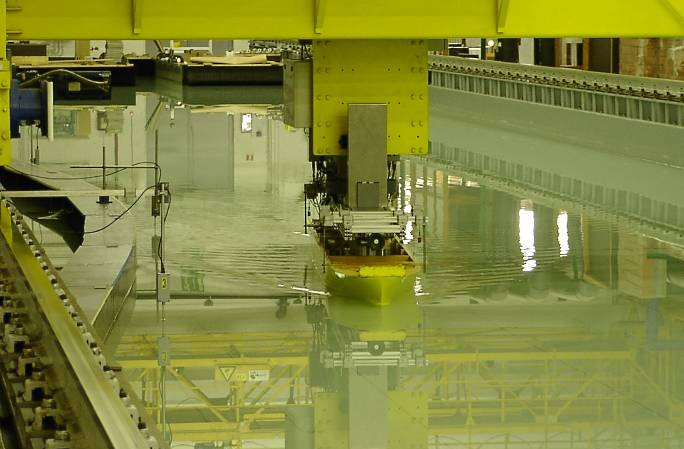
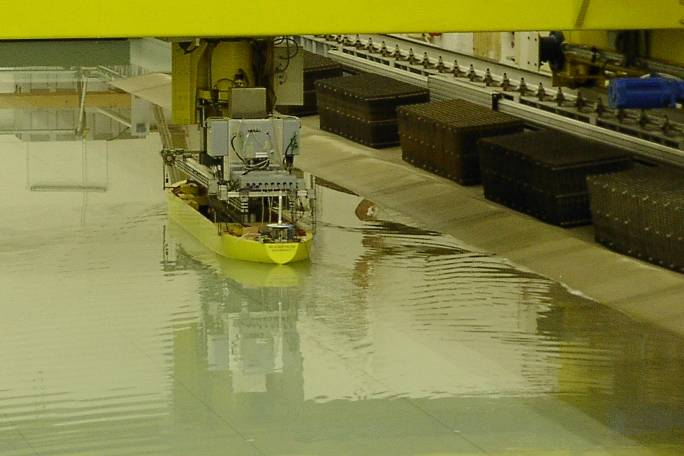
The asymmetrical flow around a vessel, such as the flow induced by the proximity of banks, leads to pressure variations between the starboard and port sides. Consequently, the vessel will be attracted to the nearest bank, while the bow is pushed towards the centre of the fairway. The effect is, of course, largely dependent on the distance between the vessel and the bank, but also on the vessel's speed and under keel clearance. Safe control of the vessel will become impossible with too strong bank effects. A reliable estimate for these bank effects is of importance in order to be aware of the limit conditions for safe traffic.
Several experimental campaigns have been conducted to study the bank effects. A website was built for the research carried out in 2006. In 2010 additional oblique towing tests with five different ship models were carried out. The tested ship types were:
- Inland vessel
- Estuary vessel
- KVLCC2
- 12000 TEU container carrier
- Mathematical Wigley Hull
Four different bank geometries were installed in the towing tank. These surface piercing banks had a slope of 1/4, 1/3, 1/1 and a vertical quay wall. The models were systematically towed at different speeds, lateral distances, propeller rates and water depths. At different discrete positions the wave pattern was registered.
Transient effects
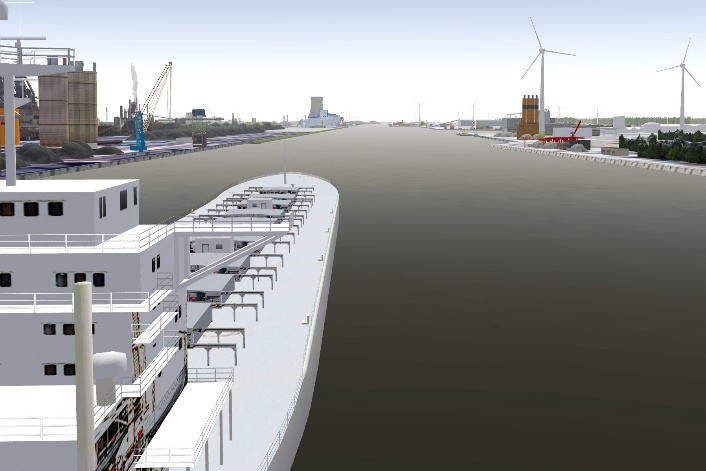
When a vessel passes a dock along the same canal, then these bank effects can no longer be assumed to be stationary. Instead, the effects will result in a transient phenomenon induced by the sudden change in ship to bank distance. It is important that these transient effects are modelled correctly.
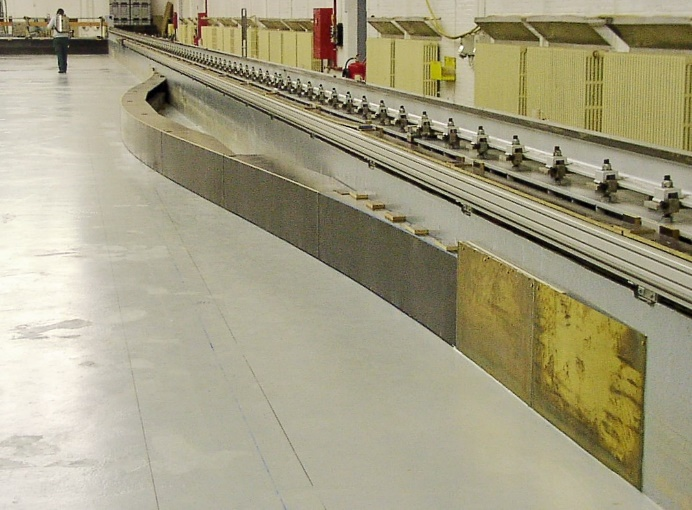

The mathematical model for bank effects which the Knowledge Centre uses, can cope with these transient phenomena. In the past, towing tank experiments were carried out with a ship sailing along a vertical bank with a sinusoidal waterline and along a vertical bank with a step function as waterline. The mathematical model for the bank effects (squat, horizontal forces and moments) in the ship manoeuvring simulators of Flanders Hydraulics Research includes the results of these tests and sudden changes in the bathymetry.
The mathematical model was validated by studying the transit of a 230 m long and 37.5 m wide bulk carrier on the Canal Ghent-Terneuzen with both Dutch and Flemish pilots. In 2016, an experimental program was carried out in the towing tank for manoeuvres in confined water to study additional transient bank effects.
Validating bank effects with numerical tools
Within the framework of NATO workgroup AVT-216 , the experimental results with the KVLCC2 tanker model were used as a reference for validating bank effects in shallow water with numerical tools. For the evaluation, the bank section with a vertical wall on the starboard side of the ship and a 1:4 slope on the port side of the ship were used.

Computational results were submitted by several institutes, including the Knowledge Centre. The majority of computations executed were run in steady mode. For three cases, additional computations were run in unsteady mode, and small improvements were observed in the comparison of the integral quantities (forces and moments acting on the ship hull).

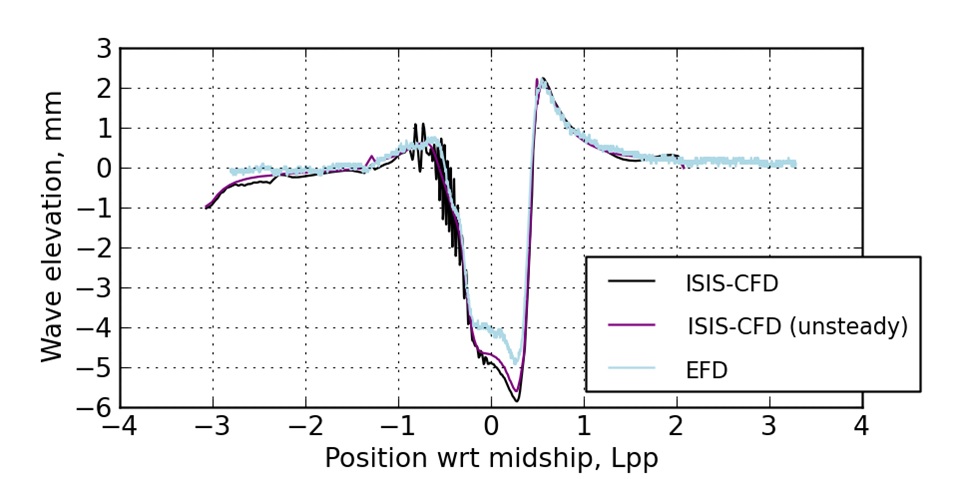
Based on comparisons of the computations with experimental results, it is found that bank effects can be predicted using CFD tools. However, some deviation from the measurement is seen and this needs further study. The study also shows that for sailing very close to a vertical bank in shallow water, potential flow models are not able to accurately predict the bank effects and viscous-flow methods need to be adopted to obtain the right trends of bank suction or repulsion.
The experimental results have also been used to develop a sophisticated mathematical model that can be used in the manoeuvring simulators
